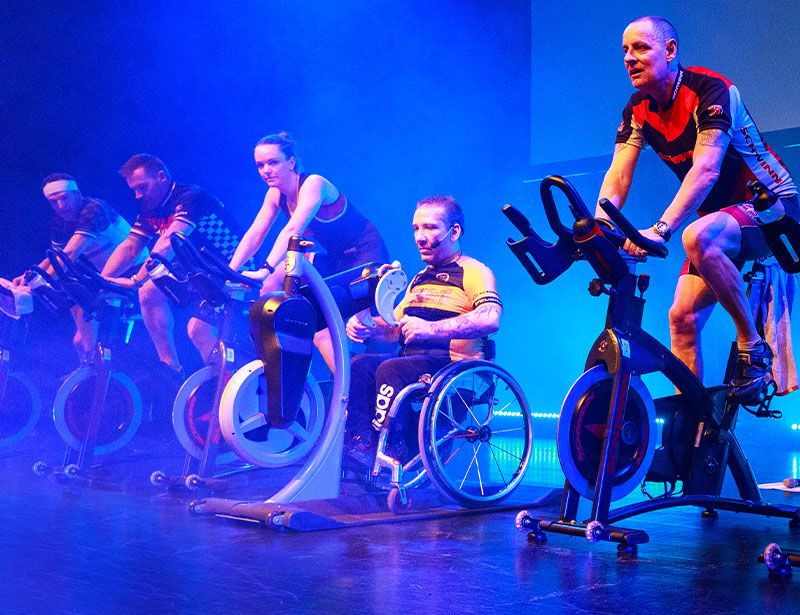Indoor cycling academy
The power of visible effort
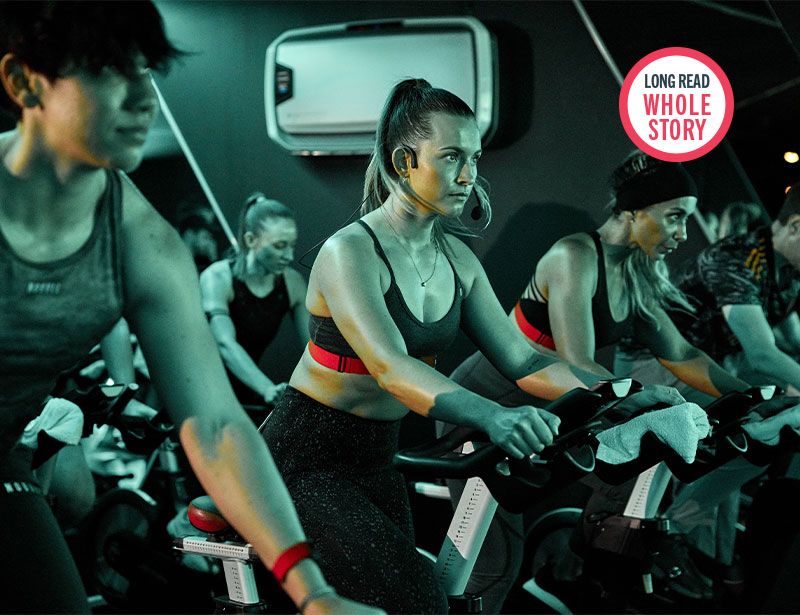

Tell us about your research.
After doing my masters in marketing at Leeds University, I worked on the Nike account at an advertising agency. The campaigns were always about training hard and pushing yourself, but I was conscious this message wouldn’t work for everyone. Especially when you first start exercising, it’s about the little wins.
I wanted to explore this further, looking at what messages would help people stick with exercise, especially beginners. I approached Leeds University to do a PhD on the topic of social contexts and their influence on exercise motivation, performance and happiness.
“Where there’s no objective measure of performance, everyone judges themselves based on those around them”
One of my grounding theories was the social comparison theory, which describes how people naturally compare themselves to others – even if not intentionally – in all aspects of life. I wanted to see if this would have an impact on people’s motivation, performance and happiness in a gym-based group exercise environment.
My studies were conducted at the university gym. Although open to the public and academic staff, it meant a high proportion of my study participants were students. This could have influenced the results, as younger people tend to be more affected by social comparison than older people, but I believe we all compare ourselves to others, even as we age.
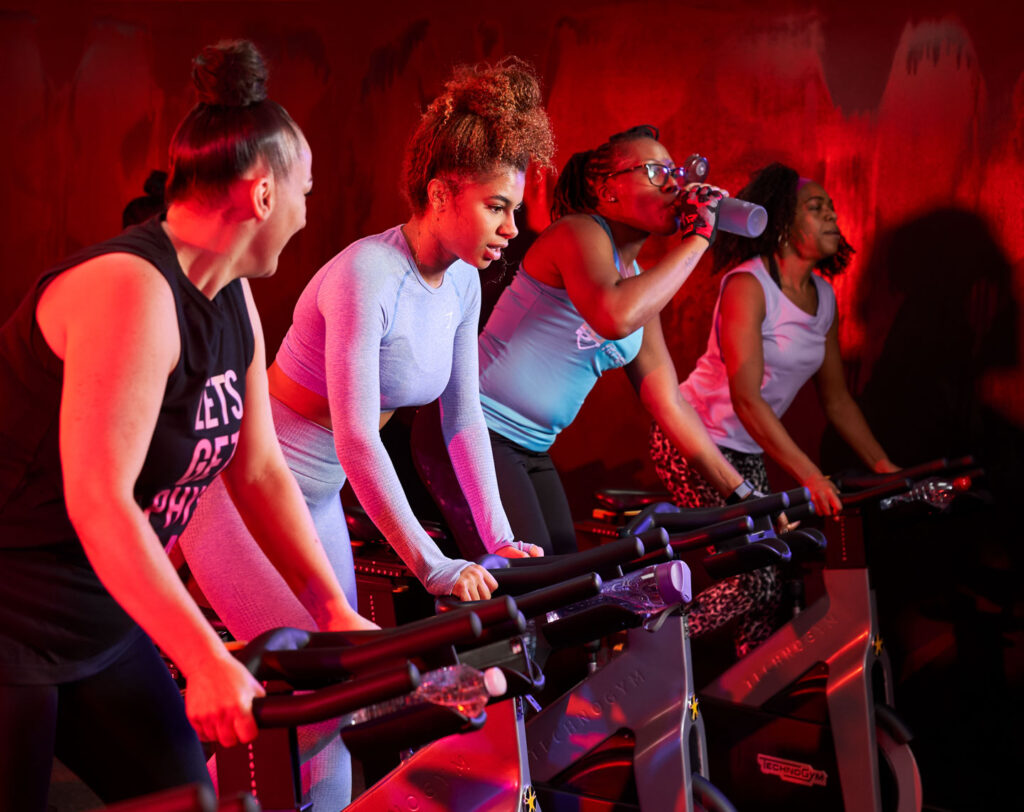
What did you measure?
Performance I defined as calories burnt and, where relevant, distance travelled. I wanted to talk the language of the masses rather than using elite performance metrics.
Motivation was measured according to a peer-reviewed academic scale published in the Journal of Marketing Research. Participants self-reported how motivated they felt during class, how hard they worked during class and how much effort they put in, giving each a score out of seven.
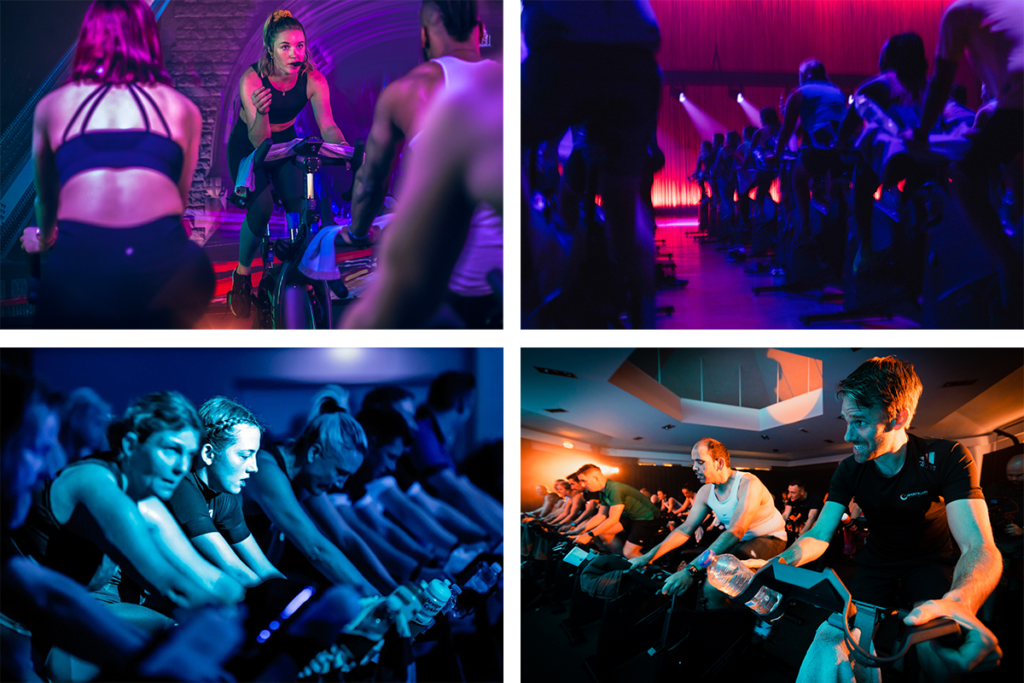
And then happiness was measured using a peer-reviewed academic scale published in the Journal of Personality & Social Psychology, with participants giving scores out of seven in response to statements such as: ‘this class gave me a sense of enjoyment’; ‘I felt good while engaged in the class’; and ‘I felt happier in this class than in other activities’.
My results stand even when controlling for age, BMI and body image.
“Effort visibility effectively erased the impact of group composition and lessened the natural decline in motivation over time”
What studies did you conduct?
My initial study was based on a one-off indoor cycling class, with participants anonymously categorised as beginners or advanced based on their self-reported indoor cycling experience. Nobody knew about these categories, though.
I then randomly assigned people to one of two cycling classes to look at the impact of group composition on motivation, performance and happiness.
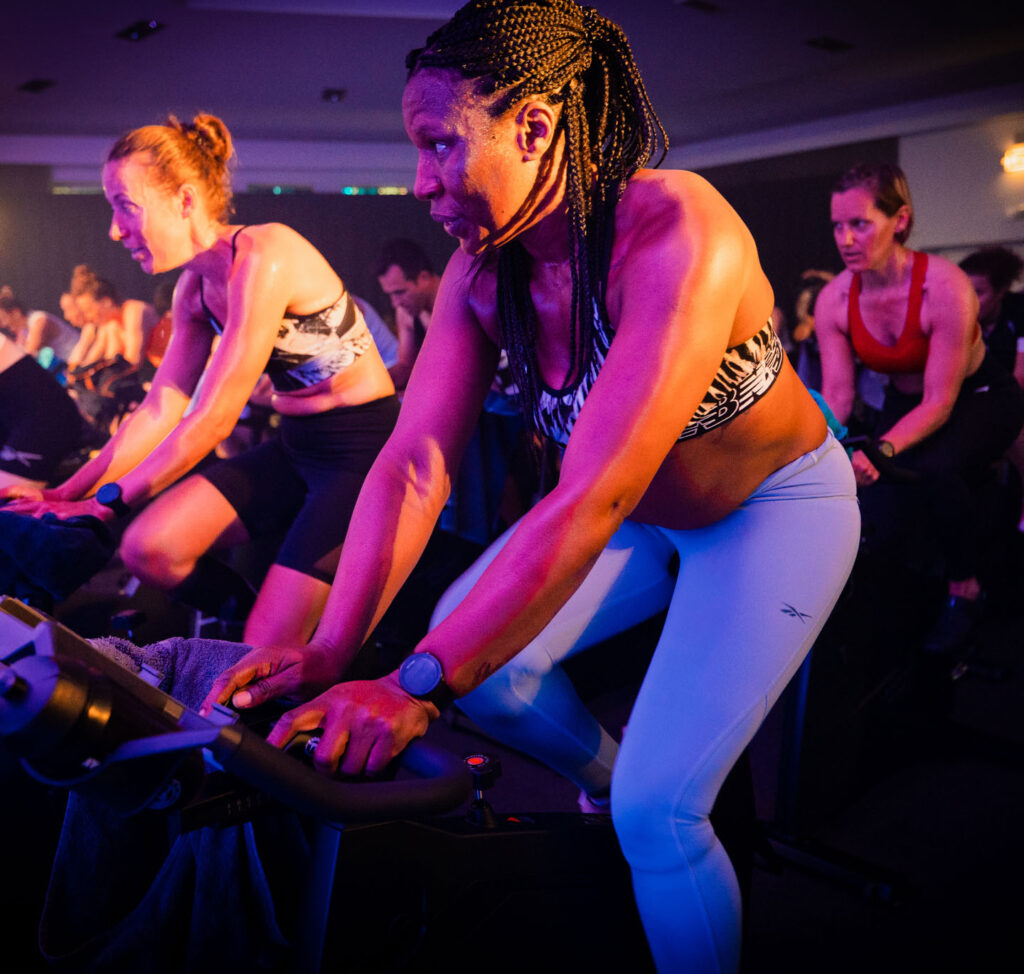
As I say, my main focus was on understanding how to support beginners, so I studied beginners in a beginners-only class, as well as beginners alongside advanced riders in a mixed-level class. We used the same virtual cycling class across both classes for consistency and in the mixed-level class used a chess formation, surrounding each rider with people of a different level from themselves.
The results were fascinating and very much in line with social comparison theory. In the mixed-level class, advanced and beginner riders all cycled a similar distance (11.11 miles and 10.96 miles respectively) and burned a similar number of calories (278.02 kcal and 259.32 kcal). In the beginners-only class, mean performance was far lower for both distance (8.54 miles) and calories (190.39 kcal).
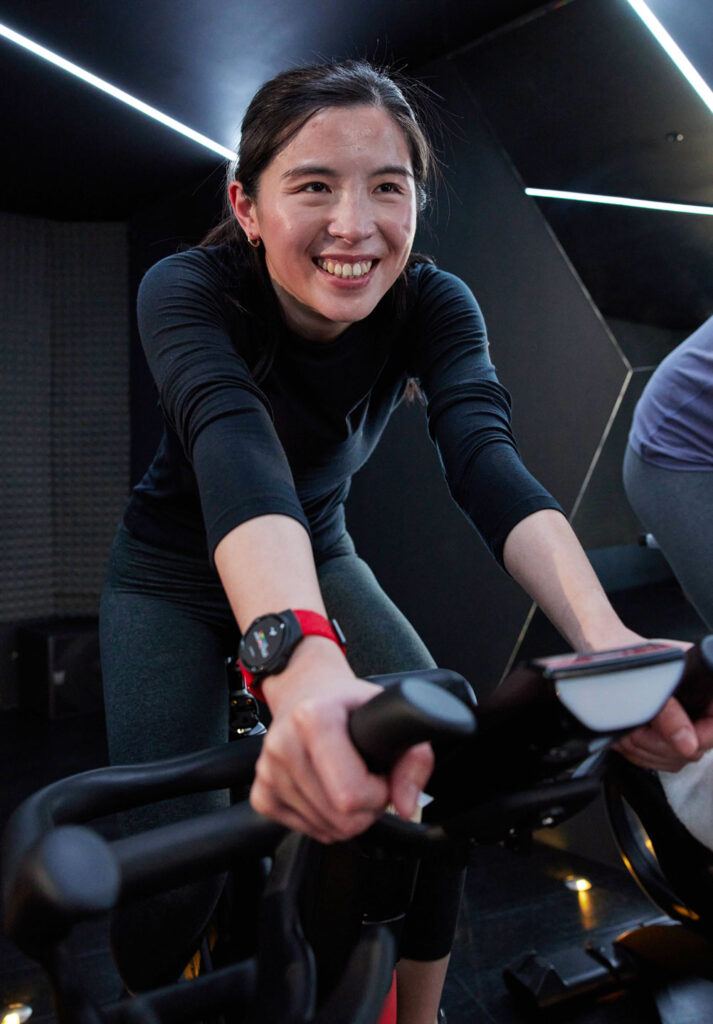
It was a small pilot study of 81 females, but it showed how in an environment where there’s no objective measure of performance, everyone judges themselves based on those around them. In the same-level group, beginners could look around and think: ‘I’m doing OK.’ In the mixed-level group, they pushed harder to keep up with the more advanced riders.
We also looked at happiness in this study and found that advanced riders were always much happier – understandably, as the experience was something they were comfortable with. However, the difference in beginners’ happiness between the two classes was not statistically significant: beginners performed much better in a mixed-level class without feeling significantly less happy than in a same-level class.
These findings led me to move on to a larger longitudinal study where as well as performance and happiness, we also looked at motivation.
“For beginners, being able to see effort data reduced the negative impact of time on their exercise enthusiasm”

Tell us about study #2.
The Leeds University gym manager was a fan of Myzone, so we collaborated with them in an eight-week study of 251 participants, again with a female bias that’s typical of group exercise.
Using Myzone enabled us to compare the impact of social comparison – a subjective way of benchmarking your own performance – with the objectivity of visible effort data.
In this second study, self-reported fitness levels were used to categorise participants as beginner or advanced, with additional InBody assessments supporting these categorisations.
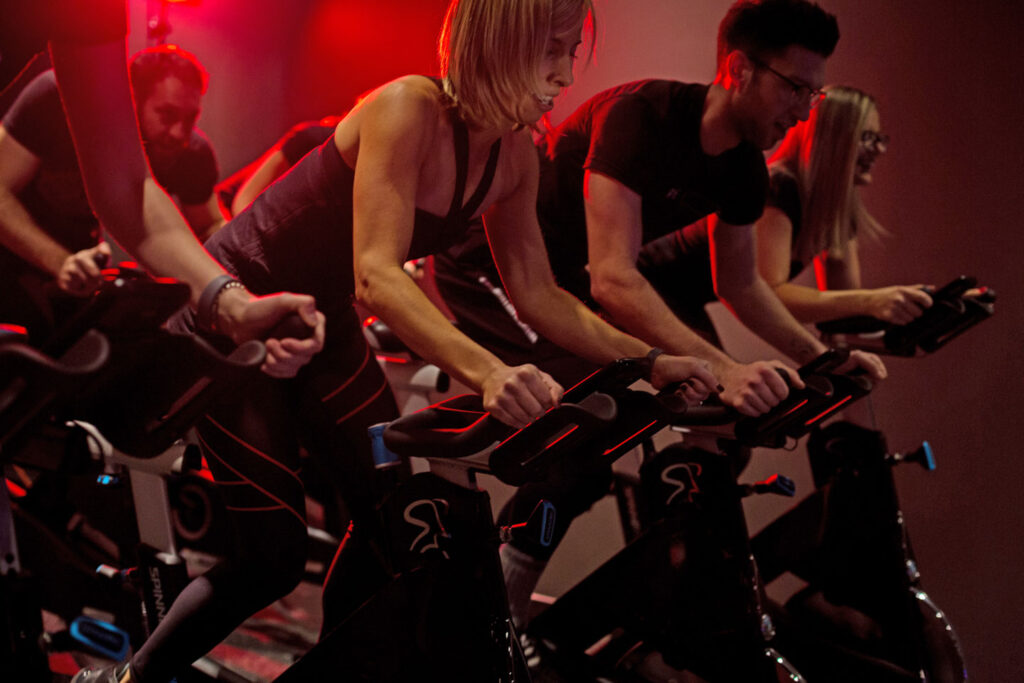
People were then randomly and anonymously allocated to one of eight groups using the variables of advanced vs beginner; same-level or mixed-level group; and with or without effort visibility – that is, a Myzone screen at the front of the class showing participants’ real-time effort as percentages on colour-coded squares.
For eight weeks, participants took part in once-weekly, 30-minute bodyweight HIIT classes – the same workout for each group, refreshed each week. We had a maximum of 15 people per class and a total of 22 weekly classes. All participants wore a Myzone belt to provide effort data, but only those in the effort visibility groups could see it.
The objective of the study was to track how performance, motivation and happiness changed over time in the different groups.
What did you discover?
In the groups without effort visibility, we saw similar results to the original pilot study: beginners in mixed-level classes were more motivated and performed better – in terms of calories burned – than beginners in same-level classes.
Around week eight, the beginners in same-level classes with no effort visibility really began to struggle with motivation.
“In advanced-only classes, performance was better with no effort visibility – the only group in which this was the case”
This gives me confidence that the results of this second study would be replicated in other gym-based HIIT classes such as indoor cycling.
Where beginners could see their effort on-screen, however, they were far more motivated, irrespective of whether they were in mixed- or same-level classes. That motivation was also sustained throughout the eight weeks.
Effort visibility effectively erased the impact of group composition and lessened the natural decline in motivation over time – something gyms are all too familiar with as new members lose motivation and drop off.
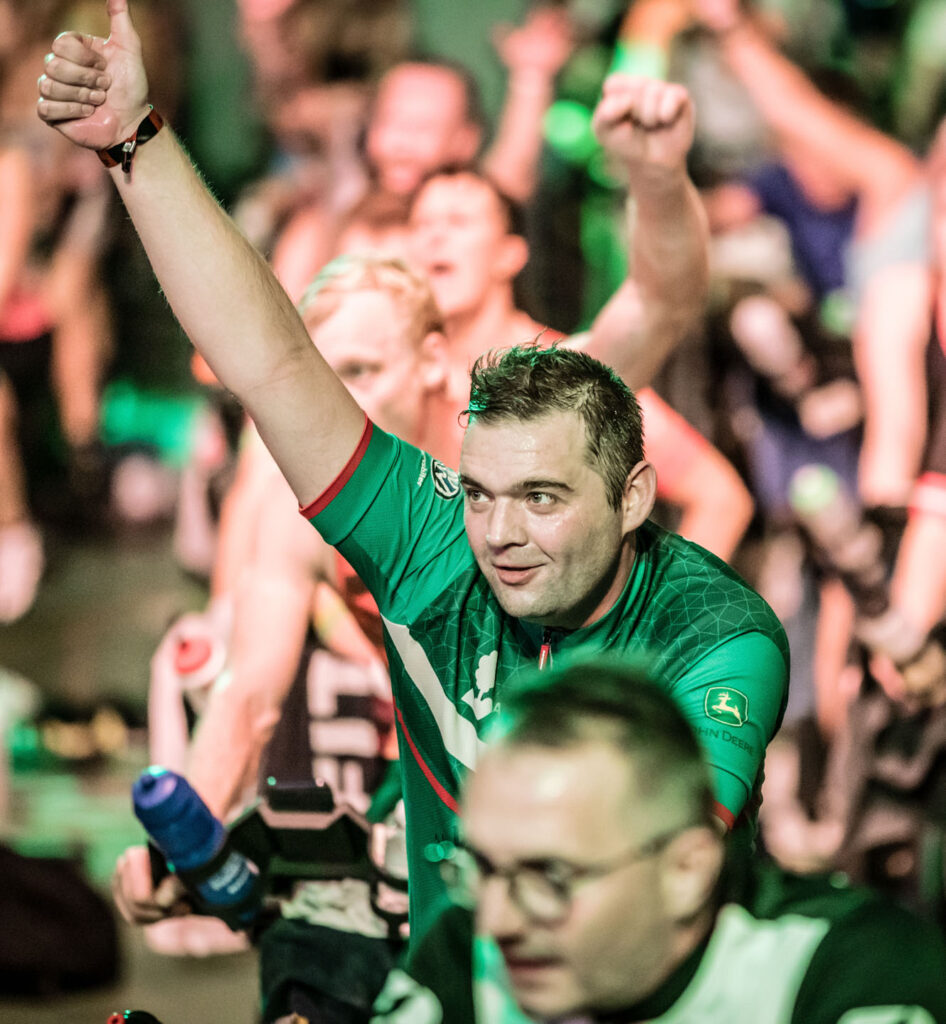
Interestingly, advanced participants in mixed-level classes were slightly more motivated when they didn’t see their effort data than when they saw it.
This could be explained by the way Myzone works: by rewarding personal effort, it’s easier for beginners to hit the red zone [maximum effort] than it is for seasoned exercisers, who might have felt they were smashing it until they saw themselves only in the yellow zone compared to others in the red.
However, while advanced participants in mixed-level classes were more motivated with no data shown, they didn’t perform as well, performing on a par with beginners.
“Over time, happiness in exercise was higher across the board when effort was visible than when it was not”
By contrast, when data was visible, advanced participants in mixed-level classes pushed themselves to perform better than the beginners – even if they felt demotivated in the process!
In this second study, we also assessed advanced individuals in same-level (advanced-only) classes. Here, performance was actually better with no effort visibility – the only group in which this was the case.
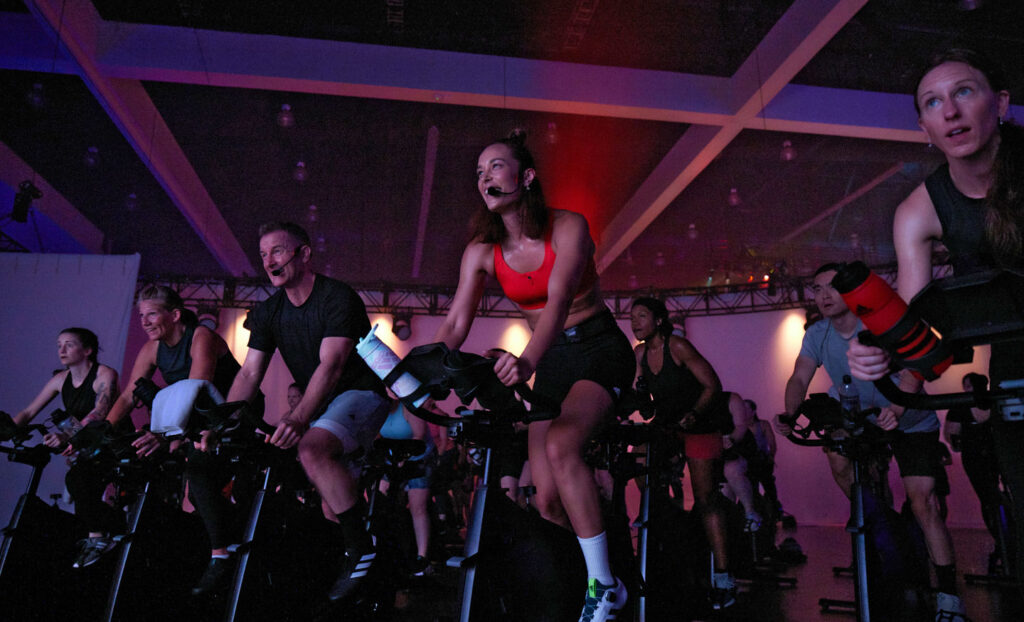
Other interesting findings include the way data visibility drove greater uniformity in performance: all groups were much closer in mean calories burned when they could see their data. Their performance still dropped over time, but this could be explained by the study effect: in week one, participants are keen to make a good impression, but by halfway through the study their excitement wanes and they don’t push as hard.
What about happiness?
Advanced participants were always happier than beginners, with or without effort visibility.
Where beginners had no visibility of their effort data, group composition strongly influenced their happiness: in mixed-level classes, their happiness initially fell, then stabilised; in same-level classes, their happiness plummeted by week eight.

Where beginners had effort visibility, their happiness still dropped a little by week eight; in the normal world, they would likely have been given the chance to try something different if they weren’t enjoying HIIT, but that wasn’t the case in this study. However, the drop was far less dramatic. Being able to see their effort reduced the negative impact of time on beginners’ exercise enthusiasm.
Finally, looking at the mean scores of all participants combined, those who could see their data were significantly happier at week four (5.17 out of 7.0) and week eight (5.12 out of 7.0) than those who could not (4.85 out of 7.0 at week four, and 4.75 out of 7.0 at week eight).

Conceived, powered and funded by BODY BIKE®, RIDE HIGH has a simple mission: to celebrate and champion the very best of indoor cycling, sharing ideas, stories and experiences from around the world to inspire the sector on to even bigger and better things. Subscribe for free by leaving your details below and we'll send indoor cycling's hottest news direct to your inbox three times a year.




